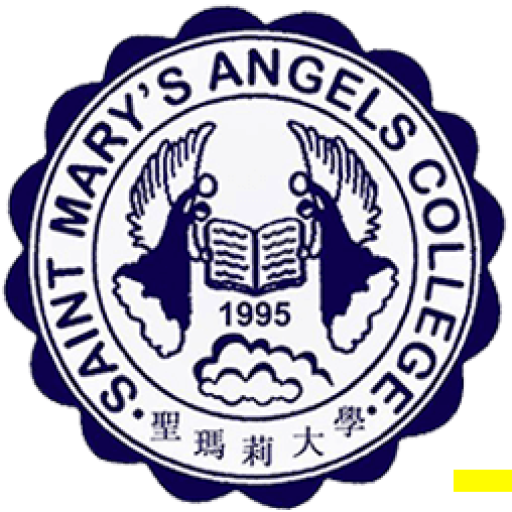BASIC EDUCATION DEPARTMENT
UPDATED
K TO 12
GRADING SYSTEM
Effective School Year 2021-2022
GRADES 1-12
TABLE OF CONTENTS
Pages
- Implementation of the Curriculum 4
- Digital Classroom Assessment 5
- Components of Summative Assessment 6
- List of Summative Assessment Tools 8
- Weight of Components 10
- Passing Grade 11
- Highest Grade 11
- Lowest Grade 11
- Scoring Written Works, Performance Task and Summative Tests 11
- Computation of Student Rating 12
- Test Construction / Number of Items / Test Design 13
- Computation of Rating For Each Learning Area 17
- Computation of General Average 17
- Marking for English 19
- Marking for Mother Tongue 20
- Marking for Science 20
- Marking for Technology and Livelihood Economics (TLE) 20
- Marking for MAPEH 21
- Marking for Computer 21
- Marking for Chinese 21
- Marking for Edukasyon sa Pagpapakatao (EsP) and Character Development 22
- Rounding Numbers 23
- Reporting of Learner’s Performance 24
- Retention and Promotion 26
- Implementation of Guidelines on Awards and Recognition 28
- Guidelines in the Selection of Honors/ Awardees 29
- Awards 30
- Selection of Awardees for Specific Academic Discipline 36
- Certificates, Medals , Plaques 40
- Awards Committee 40
- Protest 41
DIGITAL CLASSROOM ASSESSMENT AND GRADING SYSTEM
BASIC EDUCATION DEPARTMENT
DEPED ORDER NO. 8 s. 2015
POLICY GUIDELINES ON CLASSROOM ASSESSMENT FOR THE
K TO 12 BASIC EDUCATION PROGRAM
- Implementation of the Curriculum Grades 1-12
- In line with the implementation of the Enhanced Basic Education Act of 2013 (Republic Act No. 10533), the Department of Education is adopting the enclosed Policy Guidelines on Classroom Assessment for the K to 12 Basic Education Program that took effect SY 2015-2016 and as per Deped Order 12 s. 2020 Adoption of the Most Essential Learning Competencies (MELCs) effective SY 2020-2021:
- The BE-LCP streamlines the K to 12 Curriculum into the Most Essential Learning Competencies (MELCs), to be delivered in multiple learning modalities and platforms. The streamlining of the K to 12 Curriculum into the MELCs is an emergency measure to allow instruction amid challenging circumstances to focus on the most essential learning, and to ease the requirements for adapting classroom-based learning resource for distance learning.
- DepEd emphasizes that the broader review of the K to 12 Curriculum remains ongoing. The experience with MELCs for this school year will be used to inform and enrich the curriculum review. The Curriculum and Instruction Strand is directed to monitor the implementation of the MELCs and evaluate its effectiveness in consultation with the Regional Directors, with regular updates as well as a final report at the end of the school year to be submitted to the Secretary.
- At the end of the school year, the Secretary shall convene the Curriculum Consultative Committee as provided in Section 6 of Republic Act No. 10533, or the Enhanced Basic Education Act of 2013,to consider the results of the broader curriculum review and the lessons from the implementation of the MELCs, and recommend to DepEd the necessary refinements in the K to 12 Curriculum.
- Digital Classroom Assessment is an integral part of curriculum implementation. It allows the teachers to track and measure learners’ progress and to adjust instruction accordingly. Digital classroom assessment informs the learners, as well as their parents and guardians, of their progress.
- DepEd private schools are urged to implement these policy guidelines as well. DepEd private schools are PERMITTED TO MODIFY these policy guidelines according to their school’s Philosophy, Vision, and Mission with the approval of the appropriate DepEd Regional Office.
- Special programs may further issue supplementary guidelines in relation to the program’s specific assessment concerns.
- Digital Classroom Assessment
There are two types of digital classroom assessment, namely, formative and summative.
- Formative Assessment
Individual formative assessment enables the learner to demonstrate independently what has been learned or mastered through a range of activities such as check-up quizzes, written exercises, performances, models, and even electronic presentations.
Collaborative formative assessment (peer assessment) allows students (a minimum of 3 per group and a maximum of 6 members per group) to support each other’s learning. Discussions, role playing, games, and other group activities may also be used as performance-based formative assessment where learners support and extend each other’s learning.
Ways on how to assess the formative collaborative assessment based on the RUBRICS for Grades 4-12:
- Self- Assessment – It is when the student gives his own feedback and grades based on the rubrics. This is also applicable to Grades 1-3.
- Peer Group Assessment – It is when the other groups give feedback and grades to the performing group.
- Summative Assessment
This form of assessment measures the different ways learners use and apply all relevant knowledge, understanding, and skills. It must be spaced properly over the quarter. It is usually conducted after a unit of work and/or at the end of an entire quarter to determine how well learners can demonstrate content knowledge and competencies articulated in the learning standards. Learners synthesize their knowledge, understanding, and skills during summative assessments. The results of these assessments are used as bases for computing grades.
Ways on how to assess the summative collaborative assessment based on the RUBRICS for Grades 4-12:
- Leader- Assessment – It is when the leader of the group gives feedback and grades to his/her members.
- Teacher- Assessment – It is when the subject- teacher gives feedback and grades to all the performing groups.This is also applicable to Grades 1-3.
- Components of Digital Summative Assessment
Summative assessments are classified into three components, namely, Written Work (WW), Performance Tasks (PT), and Quarterly Assessment (QA). These three will be the bases for grading. The nature of the learning area defines the way these three components are assessed.
- The Written Work component ensures that students are able to express skills and concepts in written form. Written Work, which may include long quizzes, and unit or long tests, help strengthen test-taking skills among the learners. It is strongly recommended that items in long quizzes/tests be distributed across the Cognitive Process Dimensions so that all are adequately covered. Through these, learners are able to practice and prepare for quarterly assessment and other standardized assessments. Other written work may include essays, written reports, and other written output.
- The Performance Task component allows learners to show what they know and are able to do in diverse ways. They may create or innovate products or do performance-based tasks. Digital Performance-based tasks may include skills demonstration, group presentations, oral work, multimedia presentations, and research projects. It is important to note that written output may also be considered as performance tasks. Performance tasks may also be for one (1) or more subject area. Integration of several subjects in one performance task provides a holistic view of how subjects are interrelated with one another or interdisciplinary. Although there may be a single output, the different subjects that were integrated will provide a separate rubric which will focus on the skill/s that needs to be assessed.
- Quarterly Assessment measures student learning at the end of the quarter. These may be in the form of objective tests, performance-based assessment, or a combination thereof.
Table below shows the components of summative assessment, their purposes and when they are given.
| COMPONENTS | PURPOSE | WHEN GIVEN |
| Written Work(WW) | 1. Assess learners’ understanding of concepts and application of skills in written from.2. Prepare learners for quarterly assessments. | · At the end of the topic or unit. |
| Performance Task(PT) | 1. Involve students in the learning process individually or in collaboration with teammates over period of time.2. Give students opportunities to demonstrate and integrate their knowledge, understanding and skills about the topics or lesson learned in a specific real-life situation by performing and/or producing evidence of their learning.3. Give students the freedom to express their learning in appropriate and diverse ways.4. Encourage student inquiry, integration of knowledge, understanding and skills in various contexts beyond the assessment period. | • At the end of the lesson focusing on a topic/skill lesson.• Several times during the quarter |
| Quarterly Assessment (QA) For GS & JHS(Long Test & Periodic Test) For SHS(Midterm & Final Exams) | 1. Synthesize all the learning skills, concepts, and values learned in an entire quarter | · Once every quarter · Once every semester |
List of Summative Assessment Tools

